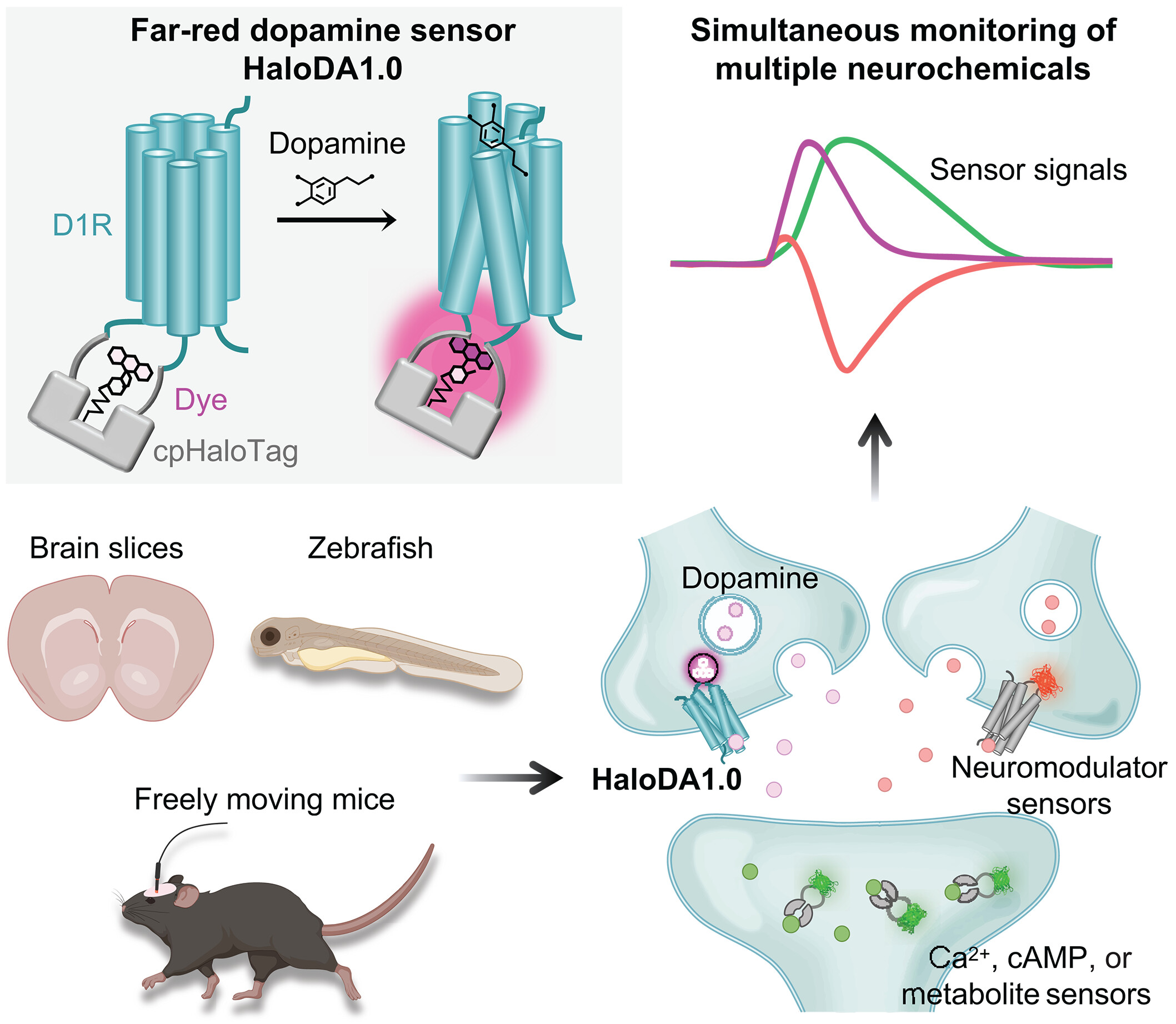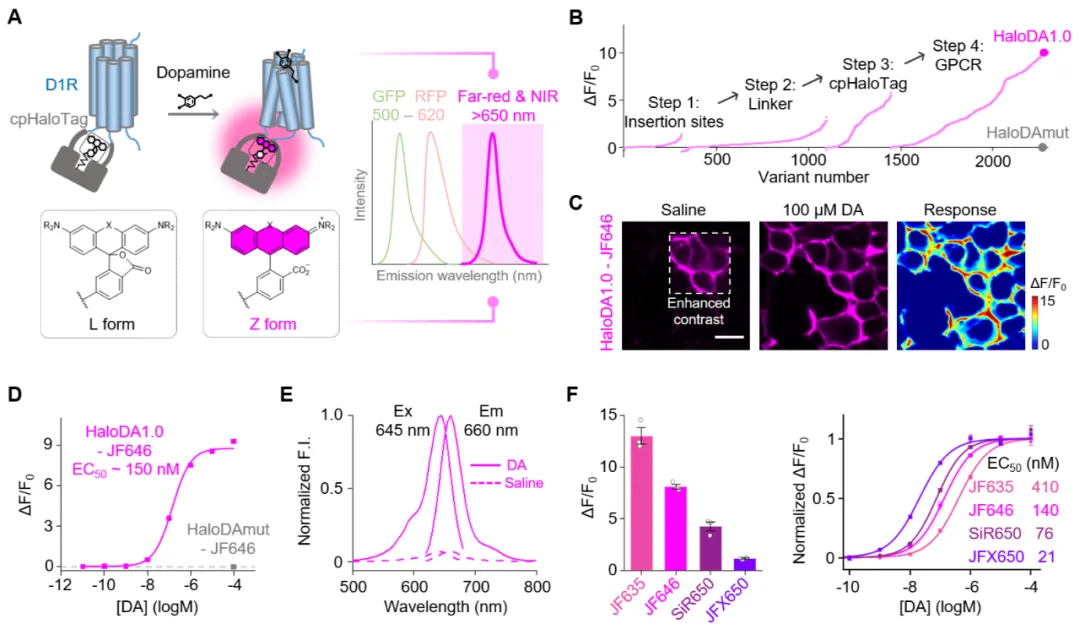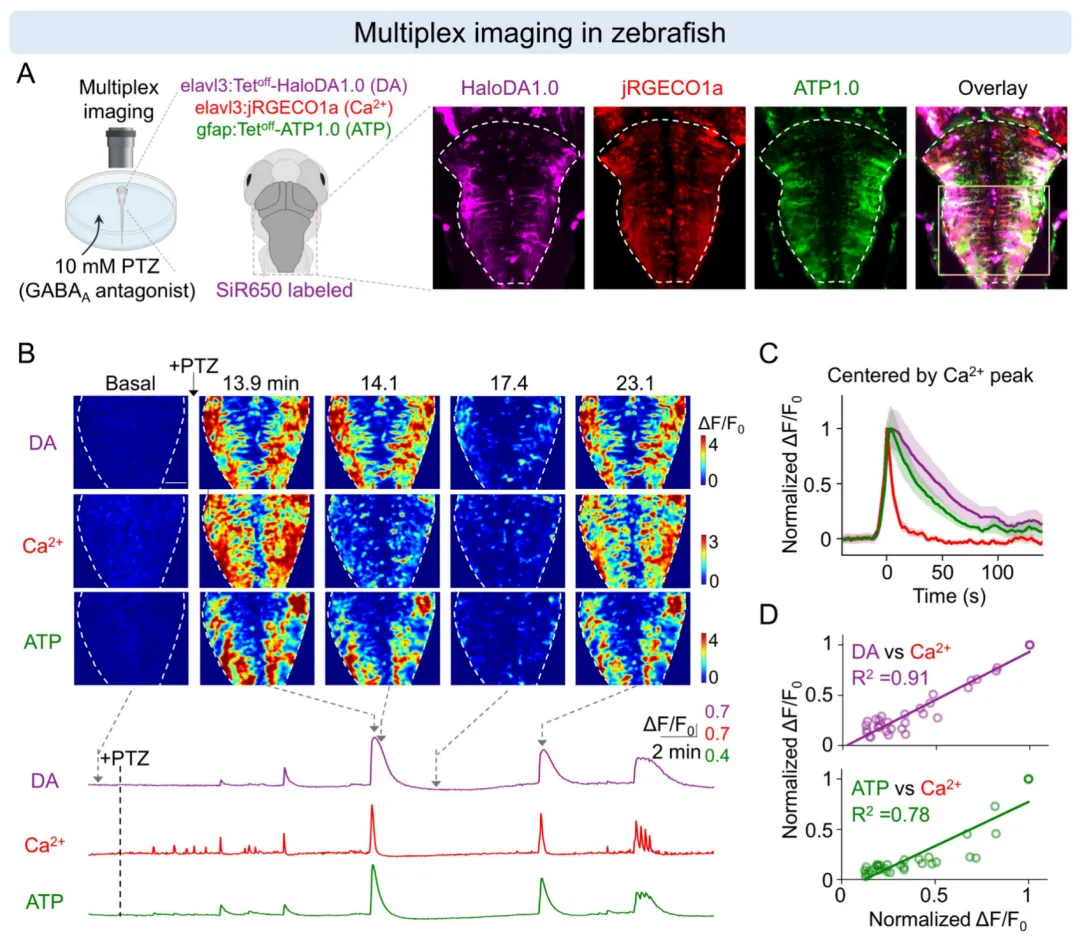In vivo multiplex imaging of dynamic neurochemical networks with designed far-red dopamine sensors
Published in Science, 2025
Yu Zheng†, Ruyi Cai†, Kui Wang‡, Junwei Zhang‡, Yizhou Zhuo, Hui Dong, Yuqi Zhang, Yifan Wang, Fei Deng, En Ji, Yiwen Cui, Shilin Fang, Xinxin Zhang, Kecheng Zhang, Jinxu Wang, Guochuan Li, Xiaolei Miao, Zhenghua Wang, Yuqing Yang, Shaochuang Li, Jonathan Grimm, Kai Johnsson, Eric Schreiter, Luke Lavis, Zhixing Chen, Yu Mu & Yulong Li✉
Abstract
Neurochemical signals like dopamine (DA) play a crucial role in a variety of brain functions through intricate interactions with other neuromodulators and intracellular signaling pathways. However, studying these complex networks has been hindered by the challenge of detecting multiple neurochemicals in vivo simultaneously. To overcome this limitation, we developed a single-protein chemigenetic DA sensor, HaloDA1.0, which combines a cpHaloTag-chemical dye approach with the G protein-coupled receptor activation-based (GRAB) strategy, providing high sensitivity for DA, sub-second response kinetics, and an extensive spectral range from far-red to near-infrared. When used together with existing green and red fluorescent neuromodulator sensors, Ca²⁺ indicators, cAMP sensors, and optogenetic tools, HaloDA1.0 provides high versatility for multiplex imaging in cultured neurons, brain slices, and behaving animals, facilitating in-depth studies of dynamic neurochemical networks.
Check out the orginal paper.
Slides

Development and applications of a far-red dopamine sensor for simultaneous monitoring of multiple neurochemicals

Chemogenetic far-red dopamine sensor: HaloDA1.0

Performance of HaloDA1.0 sensors in zebrafish labeled with various dyes

Multiplex imaging in zebrafish
News & views
iNature
北大脑科学
新基石前沿号
中国神经科学学会
BioArt
北大科研
brainnews
生物通
生物世界
PDFs
In vivo multiplex imaging of dynamic neurochemical networks with designed far-red dopamine sensors
Supplementary Materials
